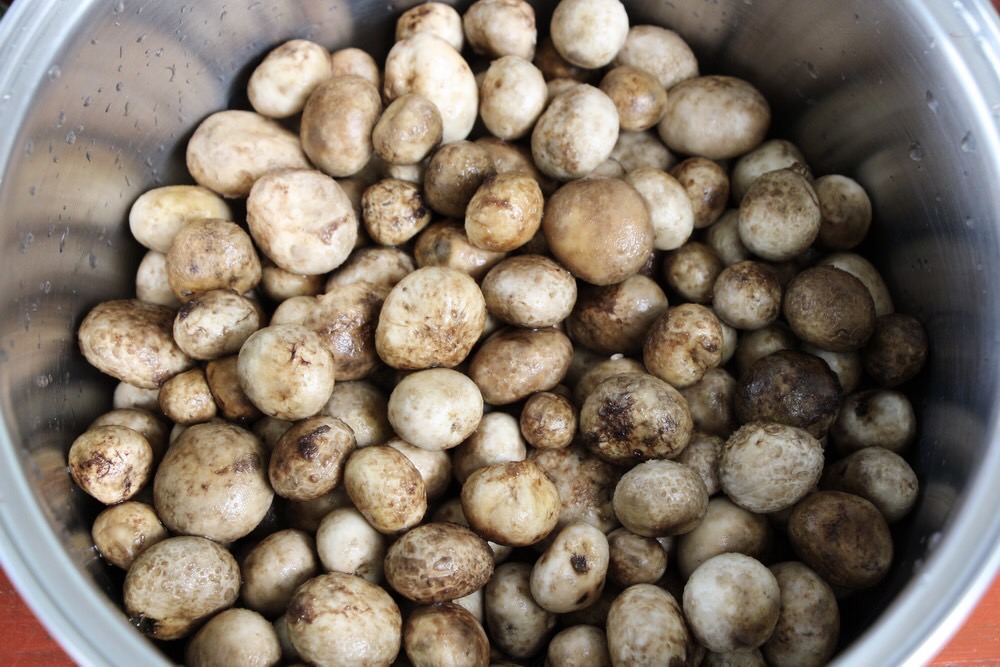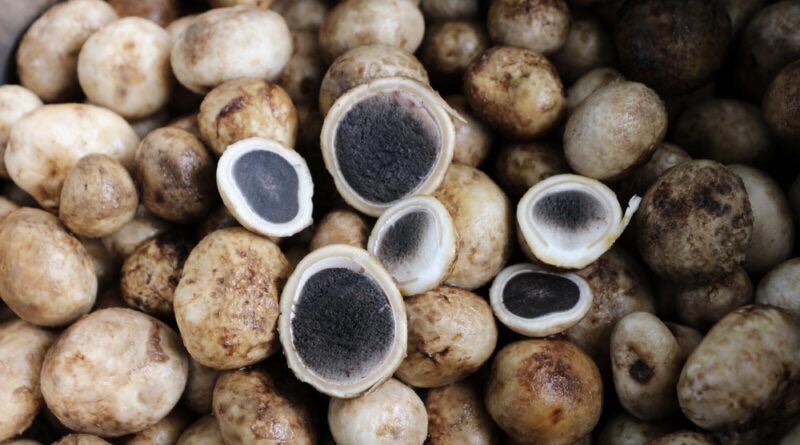Forest fires, which are frequently accompanied by smog, have various origins, including the intentional burning of forests to discover mushrooms and other resources. Despite governmental warnings against this practice, locals persist, largely due to the allure of the “Hed Thob” or “Hed Pao” mushrooms.
During the rainy season, these mushrooms, primarily found in the northern forests, saturate the market. They command prices as high as 700-800 Baht per kilogram. Even if one’s harvest only provides enough for a single meal, the demand remains high. Their unique texture and taste appeal to a broad market, making them a significant source of income for locals.
Unlike many other mushrooms, these aren’t cultivated on farms but are found in forests. The peak season for gathering them is from the end of May to June.
A common local belief is that the initial rains following forest fires stimulate mushroom growth, leading to clandestine burnings in mushroom-rich areas. Although there’s scientific evidence indicating that mushrooms can thrive even without burning, many gatherers prefer the burned areas. The reduced underbrush makes it easier to find the mushrooms.
Thung Kik, located in the Mae Ping National Park in Lamphun province, is a renowned site for these mushrooms. In certain years, harvests have reached up to 25,000 kilograms. This leads to further incentivization of forest burning in hopes of promoting mushroom growth.
Last year, the Mae Jo Forest Mushroom Research and Development Center (MJFMRDC), in partnership with several agencies, devised a method to cultivate “Hed Thob” mushrooms without disrupting forests.
Mae Jo University’s pioneering technique to cultivate the “Hed Thob” mushroom signifies a move towards eco-friendly production. This cultivation, unlike conventional mushroom farming, demands a symbiotic relationship with tree roots and takes up to three years. A key challenge is ensuring the surrounding soil is devoid of toxic chemicals, preventing the mushrooms from becoming harmful.

Trees from the Dipterocarp family, especially rubber and ‘Phayom’ trees, are deemed optimal for “Hed Thob” mushroom cultivation. Furthermore, these mushrooms assist their host trees in nutrient absorption.
Moving forward, promoting accurate information is essential to facilitate behavioral changes. One approach to tackle this issue is by educating communities about the benefits of refraining from burning forests for mushroom hunting. The recent knowledge-sharing initiative from The Mae Jo Wild Mushroom Research and Innovation Center on Hed Thob mushroom cultivation offers a promising path to diminish the forest fires associated with mushroom hunting. Together, we can address this challenge.
